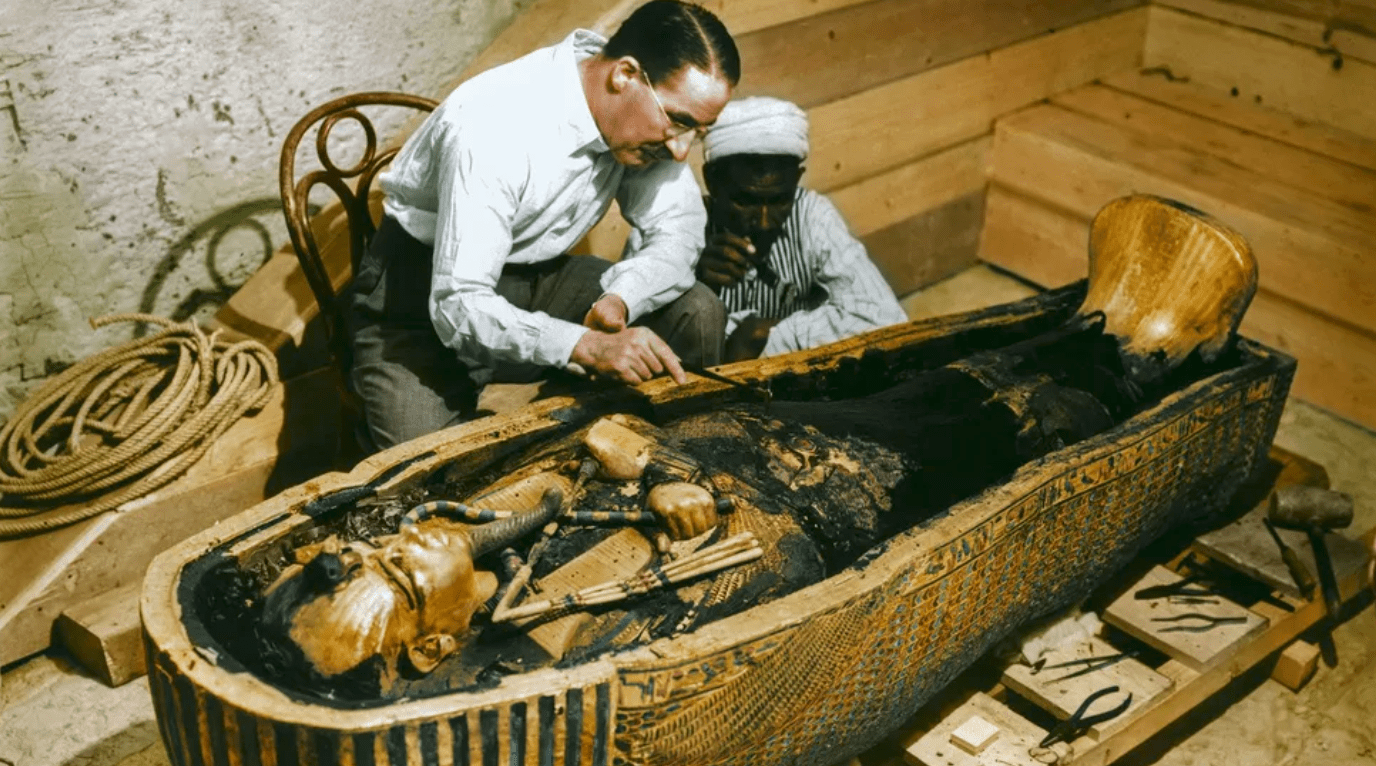A young Egyptian boy passes by his father’s bazaar in el-Sayeda Zeinab. The past is within reach, a handful of intricate pharaoh busts away—but the stern features of Hatshepsut and the round face of Ramses II do not appeal to him. It’s the famed and unfortunate boy king that he gravitates towards; picks up a small replica sarcophagus and eyes the flaking acrylic it is painted with. Three millennia after his rule over the New Kingdom, Tutankhamun has never seemed so alive. It’s a century-old fascination, not unique to young boys freshly navigating the world. Rather, the discovery of Tutankhamun on 4 November, 1922—in a fully intact, unransacked tomb—occasioned the second birth of Egyptology. While its origins span back millennia, Egyptology fully developed into a dedicated scholarship and science a century ago, in tandem with the unearthing of Egypt’s tragic boy king. Found first by British archeologist Howard Carter, Tutankhamun was seen as an opportunity before he was acknowledged as a king; for the modern world, he was an unshattered mirror into the past, a closer look at deified kings and their final resting places. As king, Tutankhamun was not…
100 Years Later: Celebrating Tutankhamun and the Egyptians Keeping Him Alive
November 4, 2022



